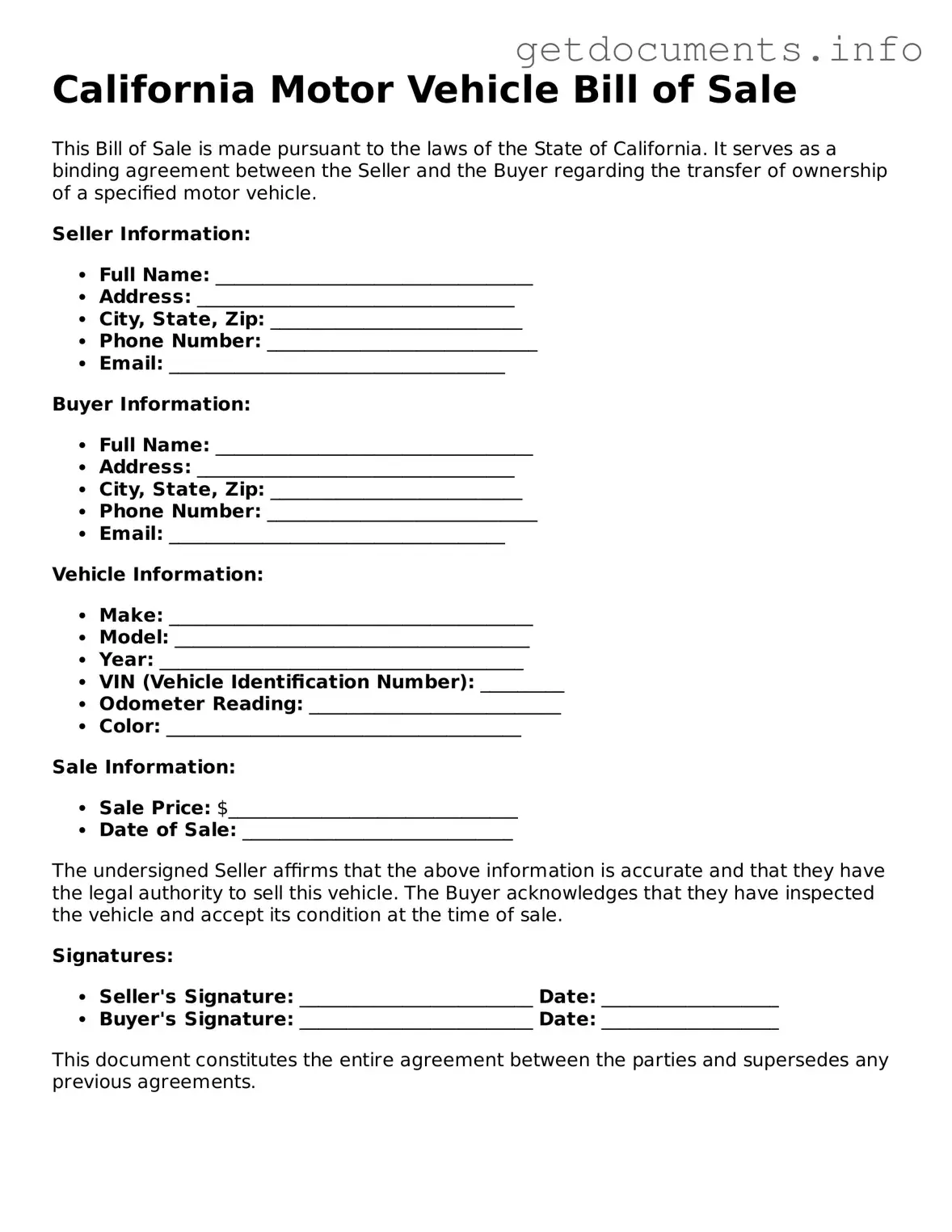Free Motor Vehicle Bill of Sale Template for California
The California Motor Vehicle Bill of Sale is a legal document that records the transfer of ownership of a vehicle from one party to another. This form serves as proof of the sale and includes essential details such as the vehicle's make, model, and identification number. To ensure a smooth transaction, it’s important to complete this form accurately; start filling it out by clicking the button below.
Access Motor Vehicle Bill of Sale Editor
